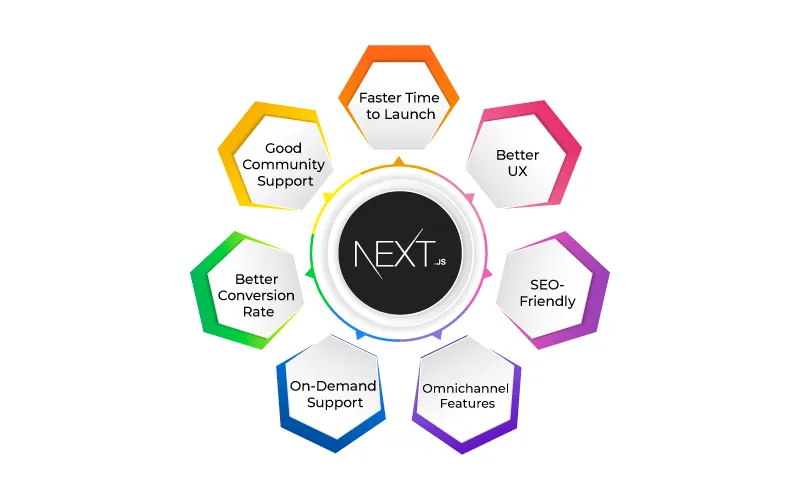Web performance optimization is a cornerstone of modern digital experiences, and server-side rendering (SSR) has emerged as a powerful technique to achieve this goal. It ensures faster page load times, better SEO rankings, and improved overall performance. One of the leading frameworks for implementing SSR is Next.js.
Unveiling Server-Side Rendering
Server-Side Rendering is a technique that allows web pages to be generated and rendered on the server, delivering fully rendered HTML to the client’s browser. This stands in contrast to the traditional Single Page Application (SPA) approach, where pages are generated on the client side using JavaScript. SSR improves initial page load times, SEO, and provides a better user experience, especially on slower devices or networks.
The Advantages Of SSR With Next.js
Next.js is an open-source React framework that simplifies React application development. It enables developers to build server-rendered React applications easily. With Next.js, you can create web applications that combine the benefits of server-side rendering with the flexibility and interactivity of client-side JavaScript.
Benefits Of Next.js For Developers

- Ease Of Use: Next.js abstracts away much of the complexity of setting up server-side rendering, making it accessible to developers of all levels.
- Improved Performance: Next.js optimizes your application for performance out of the box. It automatically splits and loads JavaScript bundles as needed, reducing initial page load times.
- SEO-Friendly: By providing server-rendered HTML to search engines, Next.js improves SEO rankings and discoverability.
- Dynamic Routing: Next.js simplifies the creation of dynamic routes, allowing you to build SEO-friendly URLs for your application.
- Developer Experience: With features like hot module reloading and automatic code splitting, Next.js enhances the development experience.
- Versatile Data Fetching: Next.js provides various methods for data fetching, including ‘getServerSideProps’ and ‘getStaticProps’, offering flexibility in how you retrieve and display data.
- Implementing SSR With Next.js: Now that we understand the benefits of SSR with Next.js, let’s explore how to implement it effectively:
- Project Setup: Start by creating a Next.js project. You can use the Next.js CLI or set up a custom server using Node.js, depending on your project’s requirements.
- Page Components: Organize your application into pages and components. Each page is a React component that represents a route in your application.
- getServerSideProps: Next.js provides the ‘getServerSideProps’ function, which allows you to fetch data on the server before rendering the page. Use this function to populate your pages with data from APIs or databases.
- Linking: Next.js offers the ‘Link’ component for client-side navigation between pages. Use it to create seamless navigation while preserving SSR benefits.
- Dynamic Routes: For dynamic routes, create files in the ‘pages’ directory with square brackets (e.g., ‘[id].js’). These pages can receive parameters and fetch data for pre-rendering.
- Error Handling: Implement error handling for cases where data fetching or rendering fails. Next.js provides tools for custom error pages.
- Deployment: Deploy your Next.js application to a hosting provider of your choice. Vercel, Netlify, and AWS are popular options.
Testing And Optimization
After implementing SSR, it’s crucial to test your application thoroughly. Monitor performance metrics, conduct SEO audits, and use tools like Google Lighthouse to ensure your site meets best practices. Optimize images, enable caching, and leverage content delivery networks (CDNs) to further enhance performance.
InRhythm Propel Summit’s Web Workshop Nexus
Our InRhythm Propel Summit’s Web Workshop became the epicenter for SSR exploration with Next.js. Attendees gained practical insights into SSR implementation, aligning with our dedication to leveraging emerging technologies for superior web experiences. The workshop fostered a deep understanding of implementing SSR and its potential to reshape digital experiences.
Closing Thoughts
In an age where web performance dictates digital success, server-side rendering with Next.js emerges as an indispensable asset. It accelerates load times, optimizes SEO, and bolsters user experiences. Our recent InRhythm Propel Summit’s Web Workshop unveiled SSR’s potential, empowering participants with actionable skills to integrate this technique effectively.
As we continue to navigate the ever-evolving landscape of web development, SSR with Next.js shines as a beacon of innovation, revolutionizing the approach to building dynamic web applications. Our commitment to driving web excellence finds its embodiment in SSR, setting the stage for elevated digital experiences in a fast-paced online world.